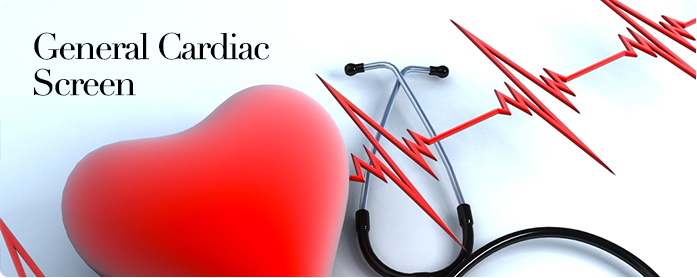What is Cardic
Cardiac means near, around, or part of the heart and "cardiac" comes from the Greek word "cardio" meaning pertaining to the heart.
A "Cardiac Monitor" is a special monitor specifically designed to count, display, and remember the number of times the premature baby's heart is beating as well as the baby's breathing patterns. When a premature baby's heart rate drops below 100 beats per minute or raises higher than 200 beats per minute an alarm will sound alerting the care givers of the problem. The care givers are able to observe the premature baby's breathing and heart at all times while the monitor keeps track of even the smallest changes.
The cardiac monitor resembles a TV screen with leads and electrodes coming out of the machine and connecting to the premature baby. The leads look like cables or wires coming from the machine and fastening to the electrodes, and the electrodes look like patches attached to your premature baby's skin. The screen graphs the gathered information in a wave-graph form with the vertical height of the waves showing the volt strength of each beat, and the horizontal width of the waves showing the time passing between each beat.
One kind of cardiac monitoring is an electrocardiogram (ECG or EKG) and it is used to detect problems of the heart such as skipped heartbeats, heart damage, vitamin, mineral & electrolyte imbalances, and overall health conditions of the heart. The electrocardiogram takes information from an electrocardiograph monitoring the patient, makes a graphic interpretation of the information, and prints out the information for easier reading and interpretation.
Another kind of cardiac monitoring is a transthoracic echocardiogram (TTE), an ultrasound of the heart. An echocardiogram (ECHO) takes pictures of the heart, and is an excellent diagnostic tool for doctors to quickly assess many heart problems without invasive procedures. This machine monitors the heart valves, strength of heart muscle contractions, cardiac tissue, blood flow, and how quickly the blood is flowing through the heart.
Common Cardiac Screening Tests
The array of tests available to evaluate patients for cardiac disease has grown exponentially in recent years. For many years the EKG, a test for which Einthoven won the Nobel Prize in Physiology of Medicine in 1924, was the primary tool used to evaluate patients for heart disease. It remains an important tool, but multiple versions of the EKG, and many anatomic and physiologic tests of cardiac function have become available. Cardiac screening tests can be separated into a few basic categories that can help us think about them:
Tests of Cardiac Screening Electrical Activity:
• The most basic of these is the EKG, a measurement of the voltage changes of the heart over time. It shows us the heart's rhythm, and can detect ischemia (lack of oxygen suggesting blocked coronary arteries), myocardial infarction, and often suggest heart enlargement.
• Ambulatory EKGs: Often called Holter Monitors, or Event Monitors, these are prolonged EKGs where the EKG tracing is recorded on a device worn by the patient for a long period of time, usually 24 hours or more. It is used to detect rhythm abnormalities, and can sometimes show ischemia also.
• Electro physiologic mapping: Also called Endocardial Mapping Procedures, or EMP, this is using electrodes to monitor electrical activity of specific areas of the heart during a cardiac catheterization.
Tests of Cardiac Anatomy and Function:
• Echocardiogram: This is a test that can be done as a 2-dimensional or as a 3-dimensional image of sound waves directed at the heart, and the echoes of these sound waves can be visualized to give an image of the structures of the heart. It is a test of both structure and function. It gives an image of the heart valves, the shape and thickness of the heart muscular walls, and the movement of the heart. By looking at the heart in both is relaxed and contracted state we can estimate the function of the heart as a pump, measuring what is called the ejection fraction, or fraction of blood emptied from the left ventricle with each beat.
• Stress Testing: These are various ways to look at the heart during times where stress is placed on the heart by increasing heart rate. This can be done with exercise, as on a treadmill, or with drugs to speed up the heart. They can be done measuring the EKG alone, the EKG in conjunction with use of a nuclear material and nuclear cameras to look at images of the heart to determine areas of impaired circulation and to estimate cardiac function. They are also done in concert with echocardiograms, and called Stress Echocardiograms to detect areas of poor heart wall motion due to inadequate circulation during exercise.
• Cardiac Catheterization and Arteriography: This is testing where a small tube called a catheter is inserted into an artery, usually the femoral artery in the groin, and passed into the heart where dye is injected while video images are taken to look at the anatomy, function and arterial circulation of the heart.
• CT Angiography: With the improvement of CT scanners so that they are fast enough to take images of the heart without motion distortion, it is possible to get useful images of the coronary arteries looking for blockages that might be amenable to angioplasty or stents to alleviate blockages that can lead to angina pectoris or myocardial infarction.
• CT calcium scoring: This is a test that has a very limited role to screen for coronary artery calcium, giving a score that may have some predictive value in assessing cardiac risk of heart attacks.
All told the progress made in cardiac screening testing has allowed many patients to have their cardiac status evaluated more accurately than was possible just a few years ago.







